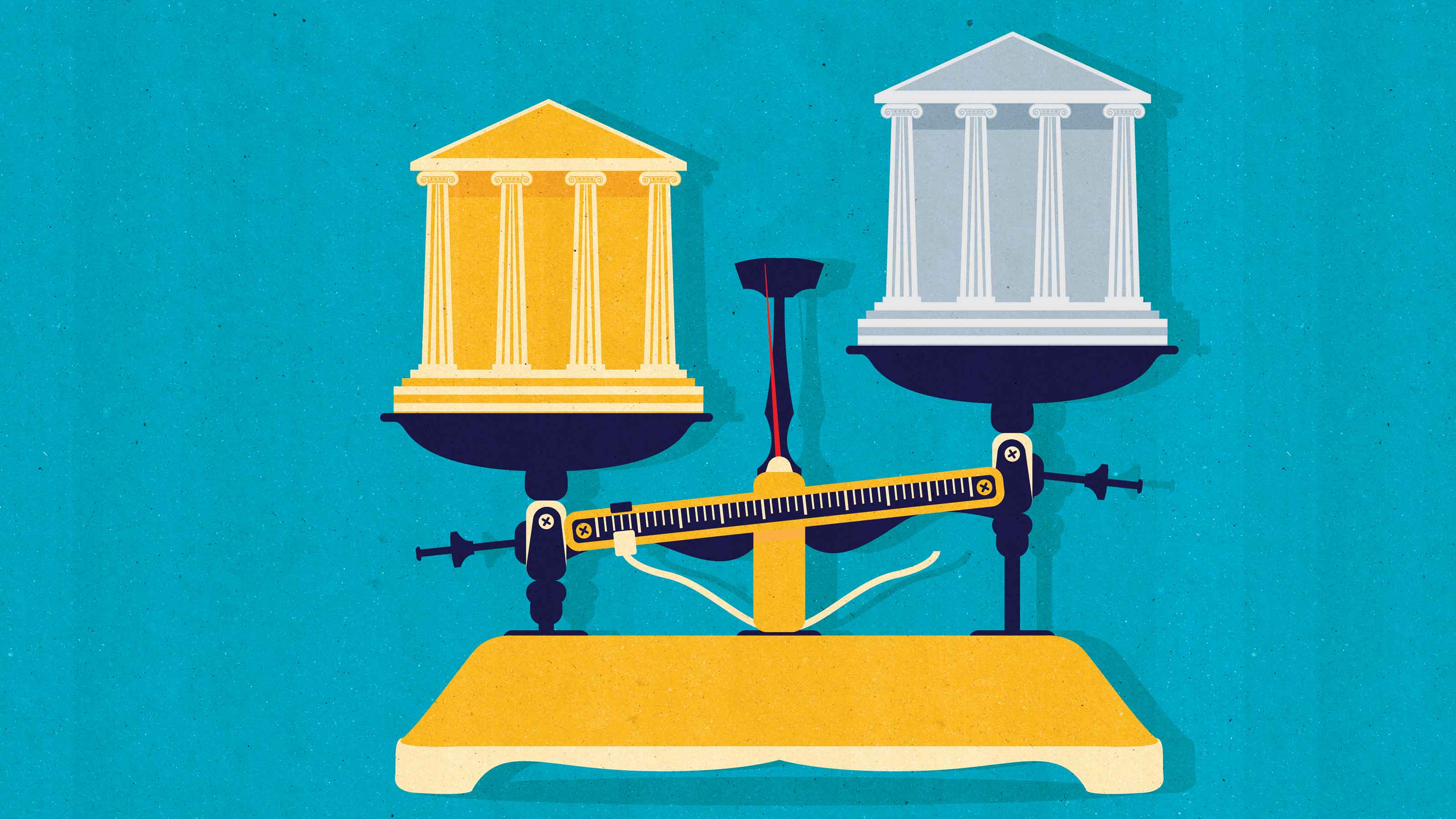
If you’re on the hunt for a better bank, you have a few aspects to consider as you settle on one with the features that fit your needs. Would you like to walk into a branch for assistance, or are you comfortable managing your accounts primarily online? Do you typically hold high balances in your accounts — which opens the door to a host of extra benefits, including fee waivers, at many institutions — or would you rather find a checking account that’s free regardless of how much money is in it? Is it important to keep your checking and savings accounts all under one roof (whether it’s brick-and-mortar or virtual), or are you willing to spread your deposits across multiple institutions to maximize the yields and other benefits you get with different accounts?
Whatever your priorities, you should be able to find institutions that suit you in our ranking of the best banks and credit unions. With the help of Curinos, a financial-data provider, we studied accounts at 40 financial institutions, judging them based on criteria including fees, minimum balance requirements, yields and the availability of additional perks, such as financial planning services or identity theft protection. We’ve named the three institutions (listed in alphabetical order) that stood out most in each of three categories: national banks, internet banks and credit unions. We also highlighted two institutions that are an especially good fit for each of three profiles: high-net-worth clients, retirees and travelers.
Even if you’re not looking for a new primary banking relationship, you may find some ideas here. For example, given the likelihood that the Federal Reserve will start cutting short-term interest rates soon, you may want to lock in a high yield on a certificate of deposit — and we’ve listed CDs here that recently offered rates above 4% for some maturities. If you have a child or teen at home, consider some of the youth-oriented accounts mentioned below.
Interest rates change frequently so before you commit to any of these accounts, check the current yield. Yields and other terms listed here are as of December 24.
Best banks of 2024
- Best National Banks: These large national banks offer a wide range of accounts and services, all with added benefits. One of the best national banks on our list also offers a free checking account — uncommon among big institutions.
- Best Internet Banks: Online banks usually have lower maintenance fees and offer higher yields than most brick-and-mortar banks.
- Best Credit Unions: Because they are nonprofit institutions owned by their members, credit unions typically have minimal fees and offer decent yields on the accounts they offer. If you're interested in learning more about qualifying for membership at each institution, check out the “How to join” section.
- Best Banks for High-Net-Worth Clients: Customers who carry large balances at these banks will get elevated benefits and unique perks.
- Best Banks for Retirees: These banks offer accounts and features suited for retirees, including in-person service, low fees and decent yields.
- Best Banks for Travelers: These banks offer features that will appeal to individuals who frequently travel, like fee-free ATMs and no foreign transaction charges.
How we chose the top financial institutions
With data from Curinos, a financial-data provider, as well as from financial institutions and other sources, we evaluated 13 national banks, 14 internet banks (including online accounts from brokerage firms) and 13 credit unions. We reviewed checking accounts, savings accounts, money market deposit accounts and certificates of deposit from each institution.
We looked at interest rates; minimum deposit and balance requirements; monthly maintenance fees and the ease of waiving those fees; ATM benefits, such as waived or reimbursed fees for out-of-network withdrawals; free or discounted benefits, such as personal checks, cashier’s checks, paper statements and overdraft-protection transfers; overdraft fees and concessions, such as cushions; and online and mobile banking features, such as the availability of peer-to-peer payment services. Yields and other data are as of December 24.
SOURCE: Curinos LLC. Data is obtained from public sources; accuracy and completeness is not guaranteed. Curinos is not liable for reliance on the data.
Note: This item first appeared in Kiplinger Personal Finance Magazine, a monthly, trustworthy source of advice and guidance. Subscribe to help you make more money and keep more of the money you make here.







